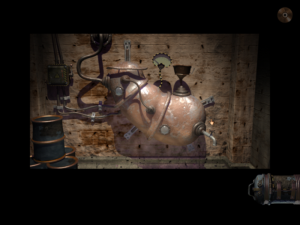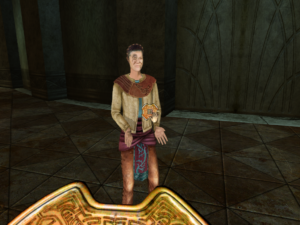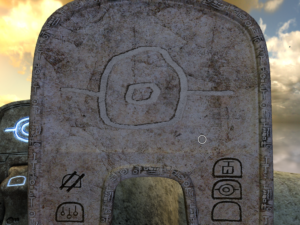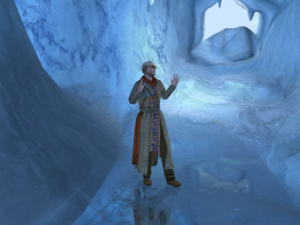Dark Fall: The Journal
There are three games in the Dark Fall series. I have the first two on physical media, although I never got around to playing far past the opening scene of the first one. I’ve somehow acquired all three on Steam as well, and the third one has Steam trading cards, where they’ve been tantalizingly out of reach due to my stubborn insistence on playing games in order when possible. So I started again on the first last night, and have already seen a lot more of it than I did back in the day.
Dark Fall: The Journal is a Mystlike set in a abandoned and decaying hotel and railway station in Dorset, haunted by several people who went missing in the 1940s, as well as some vague Great Evil that was presumably responsible for their disappearance. The ghosts manifest mainly as disembodied voices, either talking to the player directly or repeating sound snippets from their lifetimes. It’s something of a period piece — the voices are stuck in the habits of their time, and even if the decor is moldering and weathered, it’s full of moldering and weathered period touches, largely in the advertisements around the station.
By now, the work as a whole seems like a period piece at the stylistic and technological level as well, all pre-rendered still images populated with cruder objects than you’d expect in realtime today. It must have been behind the technology curve even at its release in 2002, although it makes a good effort at hiding it by keeping things dimly-lit.
I think the reason I gave up on it the first time around was that I wanted puzzles, and it wasn’t giving me any. You can go for a good long time before encountering them. The focus is instead on exploration, atmosphere, and oodles of printed matter: letters, diaries, newspaper clippings, all giving backstory. Having just browsed around, I haven’t yet really got enough of a grip on the shape of the story to put the details together into something coherent. There seem to have been some people doing dangerous rituals, which probably summoned the lurking evil presence. Six people went missing, including a young boy. One of the guests was an actress who became a laughing-stock through a failed theatrical production, but I don’t know if she’s one of the ones who went missing or one of the ritualists or both. There were flood warnings. The station was closed. Closer to the present day, some ghost hunters showed up and put cameras in various places. There’s a strange emphasis on breakfast orders. I’ll probably need to start taking notes, associating names with room numbers and the like. I think it’s probably possible to reach the end of the game without taking the effort to understand the story — certainly the few puzzles I’ve solved so far have been simple adventure-game material, such as finding a lamp for a dark corridor or a combination for a lockbox. But putting together the backstory seems like it’s the point of the work.
 Comments(0)
Comments(0)






